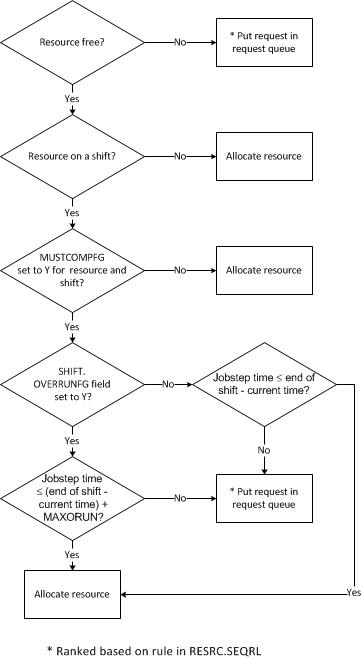Handling shift overrun situations
If a job operation must be completed before the resource goes off-shift, you can set the Must Complete field on the shift interval record (SHIFT.MUSTCOMPFG) and on the resource (RESRC.MUSTCOMPFG) to Y. If the resource cannot finish the entire operation within this interval, the resource will wait to start the operation in the next shift interval where it can finish the entire operation (or where the SHIFT.MUSTCOMPFG field is set to N). The Scheduler will try to schedule another operation, in selection rule priority, that can be completed within the available time.
When you use the Must Complete option, specify a Maximum Overrrun (RESRC.MAXORUN) value to allow the resource an extra block of time to finish the operation, and allow it to start within the Must Complete shift interval. Think of this option as a "grace period" for Must Complete shift intervals.
For example, Operation 123 takes 3.25 hours to complete, and is released at 2:00. Operation 456 takes 2 hours to complete, and is released at 2:01. Both operations require resource ABC. Resource ABC has 3 hours of remaining on-shift time, and the Must Complete option is enabled. Therefore, Operation 123 does not allocate the resource and instead enters a request in the resource’s request queue. Operation 456 will allocate the resource because it can be completed within the available time.
The diagram below illustrates how the Scheduler’s resource allocation decisions are affected by these options.
